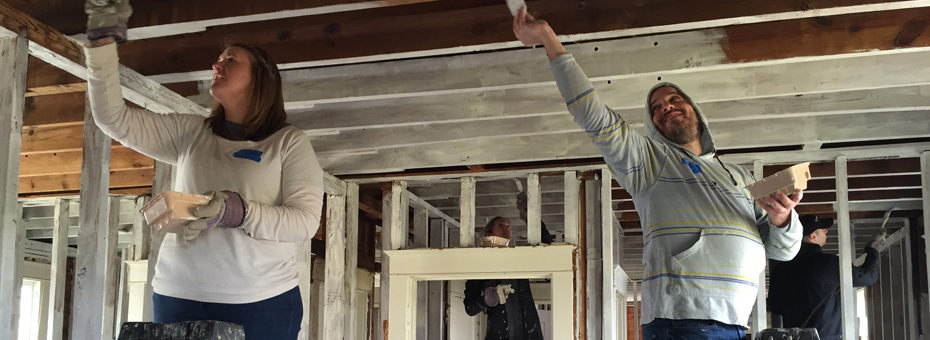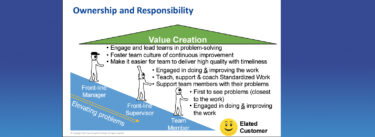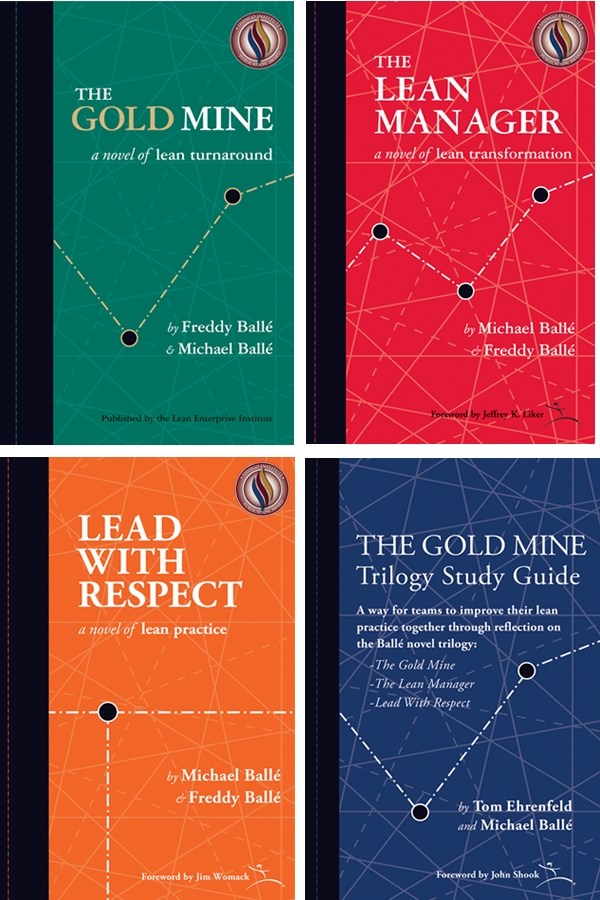As the 10th anniversary of Hurricane Katrina approaches next month, read about how lean thinking is changing how New Orleans and the U.S. recovers from disasters.
The nonprofit St. Bernard Project (SBP) had money to carry out its mission of rebuilding homes damaged by Hurricane Katrina. It had a warehouse with donated tools and building materials. It had steady streams of dedicated volunteers to do the desperately needed rebuilding work. It even had pioneered a new, more effective approach to disaster recovery. It also had a problem.
Its output of rebuilt houses had plateaued while the pipeline of people needing help rebuilding continued to fill. By 2009, four years after the huge storm hit on August 29, 2005, there were 8,000-plus displaced homeowners in the New Orleans area still struggling to move back home, but who didn’t have money or insurance for repairs. Worse, they were being joined by an increasing number of homeowners who had suffered contractor fraud.
“We had to rebuild more houses,” said CEO and SBP co-founder Zack Rosenburg. “We had to do it faster and even more efficiently.”
SBP tried assigning more volunteers to each home, working on more builds at a time, and hiring more contractors in an effort to cut the time from rebuild start to homeowner move-in. The roughly 116-day lead time barely budged. “We were stuck,” he said.
With help from the Toyota Production System Support Center (TSSC), they’d become unstuck, slashing lead time to just 60 days and dramatically increasing the number of quality homes rebuilt monthly.
Rethinking Disaster Recovery
Stuck was an unfamiliar condition for SBP. It had quickly built momentum rebuilding homes in its namesake St. Bernard Parish, engulfed by Katrina’s 25-foot storm surge, then a lingering five to 12 feet of standing water. The storm damaged or destroyed virtually every one of the parish’s 26,900 homes…
SBP’s recovery model combined volunteer workers, subsidized labor from AmeriCorps members, and a handful of in-house skilled trades-people to do the entire rebuilding process from gutting, mold abatement, electrical, plumbing, drywall, mudding, painting, etc. SBP supplements its workforce with subcontracted plumbers, carpenters, and electricians as needed. To control insurance costs, the more hazardous work of roofing and foundation repairs are always done by outside specialists.
This “all-under-one-roof” approach saved time and money by exercising direct control over scheduling and the normally siloed skilled trades. It also gave clients one point of contact.
The “lifeblood” of SBP’s model, according to Rosenburg, are the 140 or so AmeriCorps members it gets annually for 10 months in overlapping shifts, split among disaster recovery sites in New Orleans, and, after Superstorm Sandy in 2012, in New Jersey and New York. They serve as construction site and warehouse managers supervising the work of volunteers, many of whom have no construction experience. They also schedule volunteers who come for days, weeks, or a month and work as client services coordinators. Some AmeriCorps members are skilled trade workers.
“Some have had graduate degrees, some are right out of college, some are retired people,” said Rosenburg, noting that SBP puts a special emphasis on recruiting returned war veterans. “We have had nuns, too.”
AmeriCorps members are different ages, hail from different parts of the country, but all get $11,000 for 10 months “and they work their tails off,” Rosenburg said.
Not only does the SBP model handle the entire rebuilding process, it doesn’t wait until a “batch” or block of homes has been gutted. It rehabs homes one at a time.
The new model produced results. In its first year-and-a-half of existence, SBP completed the rebuilding of 88 homes, more than any other entity. For example, during the same period, the long-term recovery committee using the traditional approach had allocated funds for work to begin on 13 homes, noted Rosenburg.
The Challenge
Output kept increasing for about five years, hitting 100 rebuilt houses in 2011, before hitting a wall. “We knew we could work smarter and increase our rebuilding capacity, but we needed help figuring out how,” said Rosenburg.
He had learned that TSSC, a nonprofit arm of Toyota’s North American manufacturing and engineering operations, shared its manufacturing and process improvement knowledge (known as the Toyota Production System) with nonprofits and small to mid-size manufacturing companies. Rosenburg made a call to a Toyota executive who had recently visited.
The next visit by Toyota advisors was typical of how it works with clients. Having previously gathered by phone some basic information about work processes and organizational objectives, they went right to the “shop floor” to observe existing conditions.
“In St. Bernard’s situation, the shop floor was out in the field and their processes were very challenging to visualize,” said Scott Porter, a Toyota project manager. With 15 to 30 homes in various states of repair at any given time, it was difficult to know what homes were on schedule, ahead, behind, and why.
To read what happened next, read the full case study on the St. Bernard Project here.






